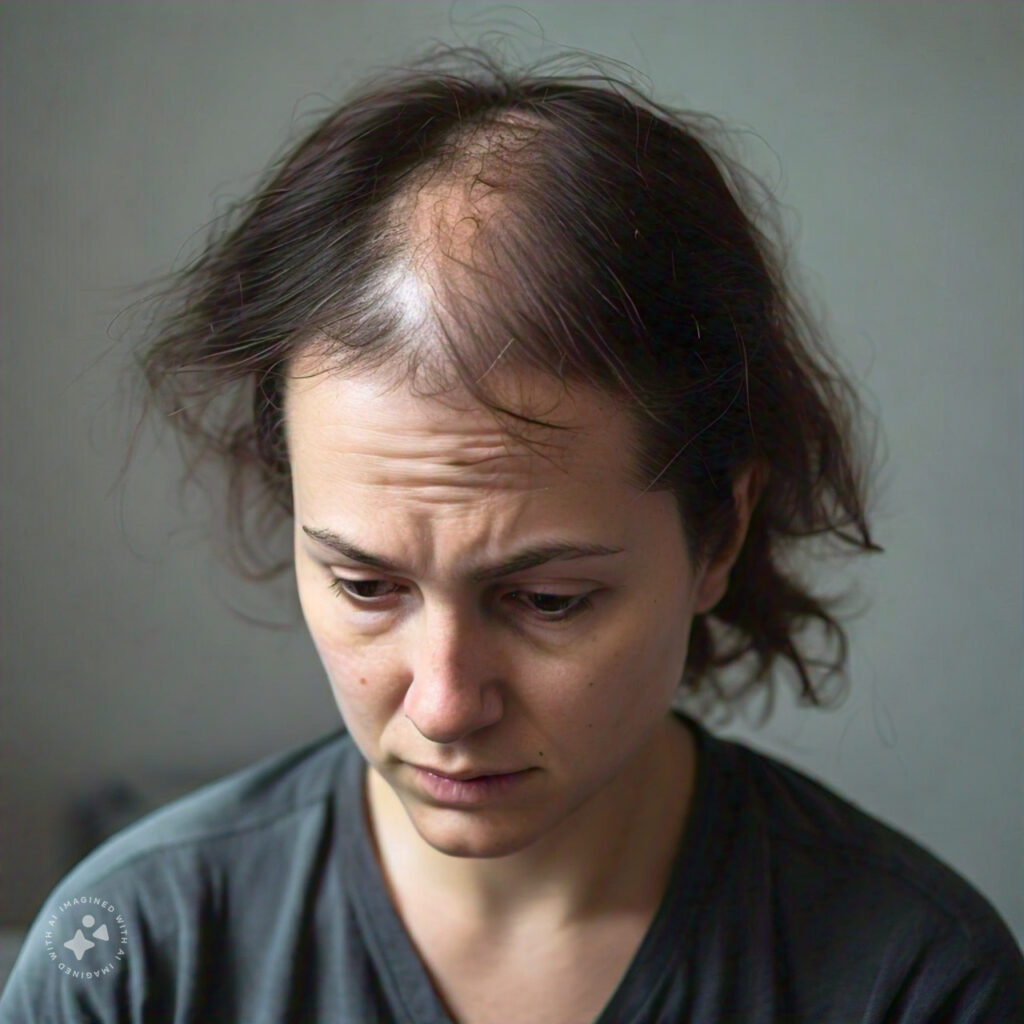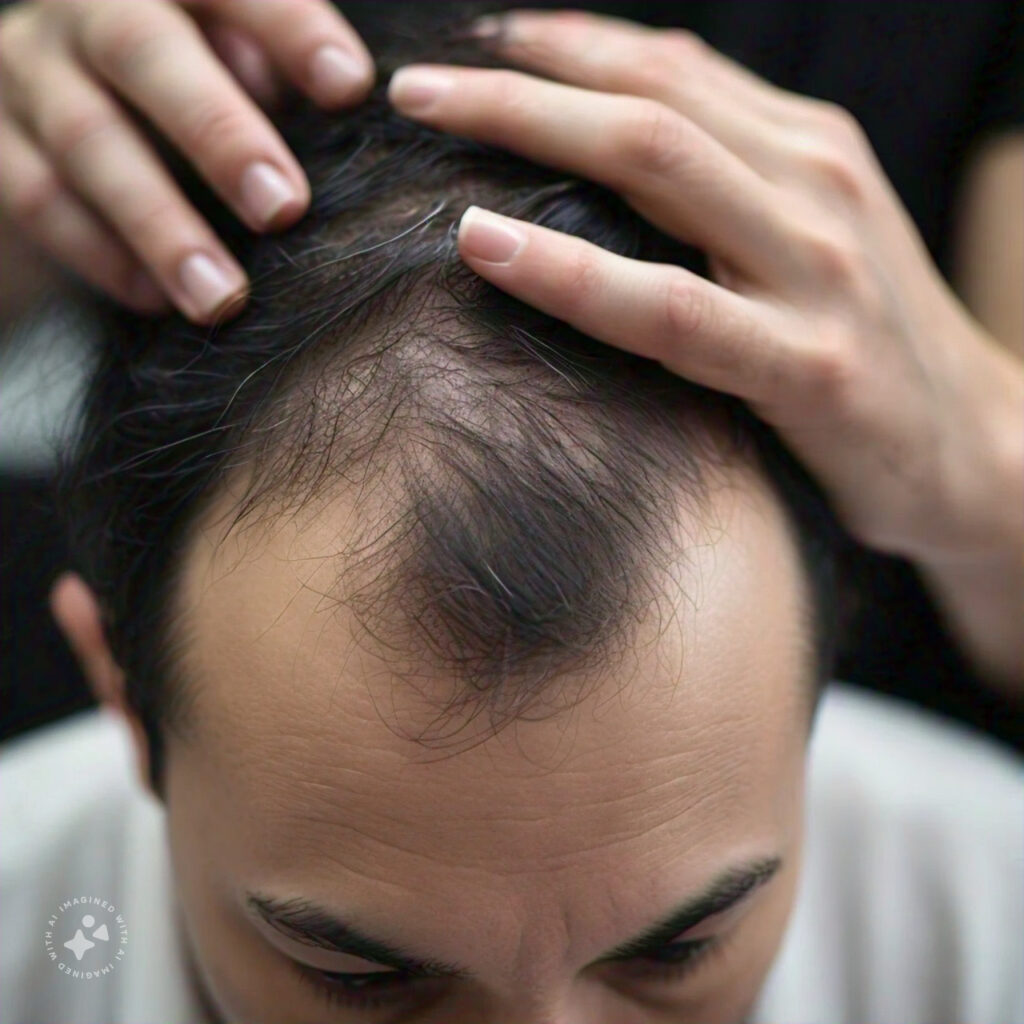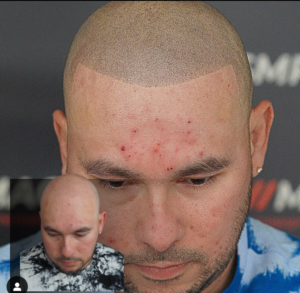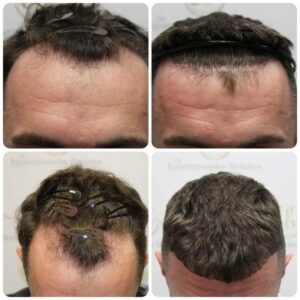Hair thinning is a common issue that affects many people at different stages of their lives. While losing some hair daily is natural, excessive thinning can be alarming and impact self-confidence.
Understanding the underlying causes and exploring potential solutions is crucial in managing this condition effectively. But you also have to identify why your hair are thinning and what possible solutions to employ.
This blog post will discuss the reasons behind hair thinning and practical steps to address it.
Table of Contents
Key Takeaway
Hair thinning can result from various factors, ranging from genetic predispositions to lifestyle choices. Age, hair products, hormonal imbalances, nutrient deficiencies, and styling habits affect hair health. Identifying the root cause is the first step in developing an effective treatment plan. From medical interventions like scalp micropigmentation and hair transplants to natural remedies, there are numerous options to explore.
By taking proactive measures and making informed decisions, you can significantly improve the health and appearance of your hair. Let’s dive into the seven main reasons your hair might be thinning.
7 Reasons Why Your Hair are Thinning
Several reasons cause alopecia, and genetics can also play a huge role. However, other common factors must be considered when identifying why your hair is thinning. Let’s start with the most obvious one. Age.
1. Age
As we age, our hair naturally becomes thinner. This is due to a decrease in the production of hair follicles and changes in the growth cycle. The hair shaft becomes finer, making it more fragile and sparse. Age-related hair thinning is more common in individuals over 50, though it can begin earlier in some cases.
2. Hair Products
The products and styles you use can significantly impact the health of your hair. Overuse of chemical-laden products, excessive heat styling, and tight hairstyles can cause damage and breakage. Regular use of hair dyes, bleaches, and perms weaken the hair shaft, making it more susceptible to thinning.
3. Hairstyles
Certain hairstyles can cause traction alopecia, a type of hair loss resulting from prolonged tension on the hair. Tight braids, ponytails, and buns can pull on the hair shaft, causing it to break or fall out. Frequent use of extensions or weaves can also lead to similar issues.
4. Hormonal Issues
Hormonal imbalances, such as those experienced during pregnancy, menopause, or conditions like polycystic ovary syndrome (PCOS), can lead to hair thinning. Androgenic alopecia, commonly known as male or female pattern baldness, is often linked to hormonal changes and genetic predisposition.
5. Nutrient Deficiencies
A diet lacking in essential nutrients can contribute to hair thinning. Key vitamins and minerals, such as iron, vitamin D, zinc, and biotin, are crucial for healthy hair growth. Without these nutrients, hair follicles can become weak and more prone to shedding. Check out our comprehensive article about nutritional deficiency hair loss.

What To Do When You Hair are Thinning
Several solutions exist for thinning hair. Although most people are inclined to surgical solutions, non-surgical methods like SMP and other remedies can be efficient.
● Scalp Micropigmentation at Mac SMP
Scalp micropigmentation (SMP) is a non-surgical procedure that involves applying natural pigments to the scalp to create the appearance of fuller hair. This technique can effectively camouflage thinning areas and give the illusion of a denser hairline.
Mac SMP specializes in this innovative treatment, offering customized solutions to meet individual needs. We oversee the latest breakthrough SMP solutions for Alopecia.
What does this procedure involve?
The process begins with a consultation, during which a trained technician assesses the client’s hair loss pattern, discusses desired outcomes, and selects the appropriate pigment shade to match the natural hair color.
During the initial session, the technician carefully maps out the areas to be treated, ensuring the pigment placement will mimic the natural hair follicles.
The application involves using a fine needle to deposit tiny dots of pigment into the scalp’s dermal layer. This technique requires precision and skill, as the dots must be placed at the correct depth and angle to achieve a realistic look. Each session typically lasts two to four hours, depending on the extent of the treated area. Most clients require multiple sessions, usually spaced a few weeks apart, to build up the desired density and ensure even coverage.
After each session, there is a short recovery period during which clients may experience mild redness or sensitivity in the treated area. It’s crucial to follow the aftercare instructions provided by the technician, which often include avoiding excessive sweating, direct sun exposure, and washing the scalp for a few days. Over time, the pigment settles, and the scalp heals, revealing a natural-looking result that can significantly enhance the appearance of hair density.
● Hair Transplant
Hair transplants can be a viable option for a more permanent solution. This surgical procedure involves moving hair follicles from a donor area (usually the back of the head) to the thinning or balding areas. Hair transplants have advanced significantly recently, with techniques like Follicular Unit Extraction (FUE) providing natural-looking results.
● Home Remedies
Natural remedies can also help improve hair health and reduce thinning. Regular scalp massages with essential oils like rosemary or lavender can stimulate blood circulation and promote hair growth. Nutrient-rich foods like leafy greens, nuts, and fish can provide the necessary vitamins and minerals for healthy hair. Additionally, avoiding excessive heat styling and opting for gentle hair care products can prevent further damage.

Frequently Asked Questions and Answers
1. Can stress cause hair thinning?
Yes, stress can trigger a type of hair loss called telogen effluvium, where hair follicles enter the resting phase prematurely, leading to increased shedding.
2. How long does it take to see results from hair treatments?
Results can vary depending on the treatment. For instance, hair transplants can take 6-12 months to show full results, while scalp micro-pigmentation offers immediate visual improvement.
3. Are there any side effects of scalp micropigmentation?
SMP is generally safe, but potential side effects include minor scalp irritation, redness, and allergic reactions to the pigments used.
4. Is hair thinning reversible?
Hair thinning can be managed and even reversed with the proper treatment and lifestyle changes, mainly if addressed early.
5. How can I prevent further hair thinning?
Maintaining a healthy diet, reducing stress, avoiding harsh hair treatments, and using gentle hair care products can help prevent further thinning.
Wrapping Up
Hair thinning can be a distressing experience, but understanding its causes and exploring effective treatments can make a significant difference. Whether you choose medical interventions like scalp micropigmentation and hair transplants or prefer natural remedies, taking proactive steps can improve your hair’s health and appearance.
The key to managing this condition is identifying why your hair is thinning. This will be crucial to maintaining the situation.
Enjoy This Article? You May Also Like:
- How To Address A Thinning Hairline: Tips And Treatment
- Micropigmentation Of The Scalp: What You Need To Know Before Getting It Done
- Discover The Best Scalp Micropigmentation In White Plains –Mac SMP
- Confused About Hair Loss Patches On The Head? We Explain The Causes And Treatment Options
- Scalp Micropigmentation Training: From Beginner To Mastery – The Ultimate Guide To Becoming An SMP Technician




